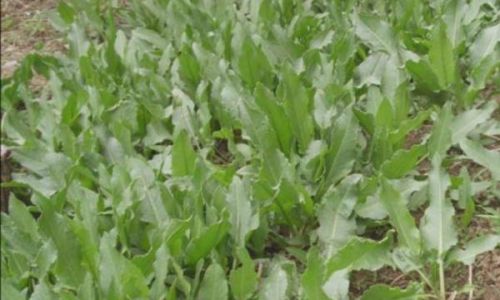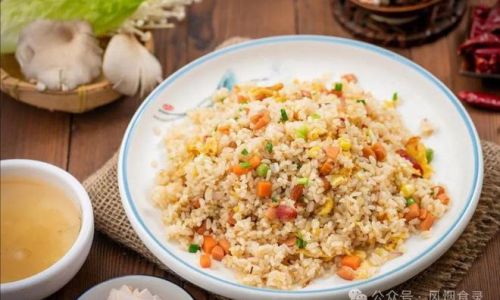Introduction
In the vast realm of plant life, humans have long explored and utilized various species for food, medicine, and other purposes. Among these, some plants are well-known and widely consumed, while others remain obscure, their potential uses and dangers often shrouded in mystery. One such plant, commonly referred to as Yangtieyezi in certain regions, has sparked curiosity among both local populations and botanists alike. This article aims to delve into the question of whether Yangtieyezi can be eaten as a vegetable, examining its botanical classification, traditional uses, nutritional value, potential health risks, and modern scientific research on the subject.

Botanical Classification and Identification
Yangtieyezi, though not a scientifically recognized name in botanical literature, is commonly used to refer to a plant belonging to the genus Rumex, specifically Rumex crispus or Rumex acetosa. Commonly known as curly dock or sour dock, this perennial herbaceous plant is native to Europe and Asia but has been naturalized in many parts of the world, including North America.
Curly dock grows up to 1.5 meters tall, featuring a robust taproot and erect, branching stems. Its leaves are alternate, arrowhead-shaped, and wavy-edged, with a prominent midrib and a slightly acidic taste when chewed. The flowers are small, greenish-white, and arranged in dense clusters at the ends of the stems. The seeds, which mature in the fall, are triangular and covered in a hard, shiny coat.
Traditional Uses and Cultural Significance
Curly dock has a long history of use in traditional medicine and folk lore. In various cultures, it has been employed as a treatment for a wide range of ailments, including constipation, skin conditions, and even as a blood purifier. The leaves and stems, when cooked, were sometimes used as a potherb or added to soups and stews for their nutritive value and unique flavor.
However, it’s crucial to note that traditional uses do not always align with modern scientific understanding of plant chemistry and safety. What was once considered beneficial may now be recognized as potentially harmful, especially when consumed in large quantities or by individuals with specific health conditions.
Nutritional Value and Potential Benefits
Curly dock leaves are rich in vitamins and minerals, including vitamins A, C, and K, as well as calcium, iron, and magnesium. They also contain significant amounts of oxalic acid, tannins, and anthocyanins, which may contribute to their astringent and slightly sour taste.
The high vitamin C content makes curly dock a valuable source of this essential nutrient, which is crucial for immune function, skin health, and tissue repair. The antioxidants present, such as anthocyanins, may help protect cells from damage caused by free radicals, thereby reducing the risk of chronic diseases like cancer and heart disease.
Moreover, the plant’s high fiber content can aid in digestion and promote regular bowel movements, making it a beneficial addition to the diet for those suffering from constipation. The iron and calcium present in curly dock leaves can also contribute to bone health and energy production.

Potential Health Risks and Concerns
Despite its nutritional benefits, curly dock is not without its risks. The high oxalic acid content is particularly noteworthy, as oxalates can bind to calcium and other minerals in the body, forming insoluble compounds that may lead to the formation of kidney stones. Individuals with a history of kidney stones or those prone to oxalate-related problems should avoid consuming curly dock in significant amounts.
Furthermore, the tannins present in curly dock leaves can interfere with the absorption of certain nutrients, such as iron and protein, potentially leading to deficiencies if consumed excessively. Pregnant and lactating women, as well as young children and the elderly, should be particularly cautious when considering the inclusion of curly dock in their diet due to its potential to disrupt nutrient balance.
Additionally, curly dock may contain allergens that can cause adverse reactions in some individuals. Symptoms such as skin rash, itching, swelling, and respiratory distress have been reported in rare cases. Therefore, it’s advisable to test a small amount of the cooked plant before consuming it in larger quantities to ensure no allergic reaction occurs.
Modern Scientific Research
In recent years, scientific research has begun to unravel the complex chemistry of curly dock and its potential health effects. Studies have focused on isolating and identifying the active compounds present in the plant, as well as evaluating their biological activities and pharmacological properties.
One area of interest is the plant’s antioxidant activity. Research has shown that extracts of curly dock leaves exhibit significant antioxidant capacity, scavenging free radicals and protecting cells from oxidative stress. These findings suggest that curly dock may have a role in preventing or delaying the progression of oxidative stress-related diseases, such as diabetes, cardiovascular disease, and neurodegenerative disorders.
Another line of research has explored the plant’s anti-inflammatory properties. Preliminary studies indicate that curly dock extracts can inhibit the production of inflammatory cytokines and reduce the activity of inflammatory enzymes, suggesting a potential use in the management of inflammatory conditions such as arthritis and inflammatory bowel disease.
However, it’s important to note that much of this research is still in the preliminary stages, and the results have yet to be translated into clinical applications. Therefore, while curly dock may hold promise as a source of natural antioxidants and anti-inflammatory agents, it should not be used as a substitute for conventional medical treatment without the guidance of a healthcare professional.
Can Yangtieyezi Be Eaten as a Vegetable?

Returning to the central question of whether Yangtieyezi (curly dock) can be eaten as a vegetable, the answer is not straightforward. From a botanical perspective, the leaves and stems of curly dock are edible and have been used as food sources in various cultures for centuries. They are rich in nutrients that can contribute to overall health and well-being.
However, the potential health risks associated with curly dock’s high oxalate and tannin content must be taken into consideration. For most people, consuming curly dock in moderation and as part of a balanced diet may pose minimal risk. However, individuals with specific health conditions, such as kidney stones or nutrient deficiencies, should avoid or limit their intake.
Furthermore, it’s essential to ensure that the plant is properly identified and prepared before consumption. Mistaking curly dock for a toxic species or consuming it raw can lead to adverse health effects. Therefore, it’s advisable to consult with a knowledgeable herbalist or botanist before incorporating curly dock into your diet.
Conclusion
In conclusion, Yangtieyezi, or curly dock, is a plant with a rich history of traditional use and potential nutritional benefits. While its leaves and stems can be eaten as a vegetable, it’s crucial to be aware of the potential health risks associated with its consumption. By understanding the plant’s botanical classification, nutritional value, and potential health effects, individuals can make informed decisions about whether to include curly dock in their diet.
As with any new food source, it’s essential to start with small amounts and monitor your body’s response. If you have any concerns or questions about the safety of consuming curly dock, consult with a healthcare professional or knowledgeable herbalist. By approaching curly dock with caution and respect, you can potentially harness its nutritional benefits while minimizing the risks associated with its consumption.
In the end, the decision to eat Yangtieyezi as a vegetable is a personal one that should be made based on individual health considerations, cultural practices, and scientific knowledge. With a balanced approach, curly dock can be a valuable addition to a diverse and nutritious diet.





0 comments